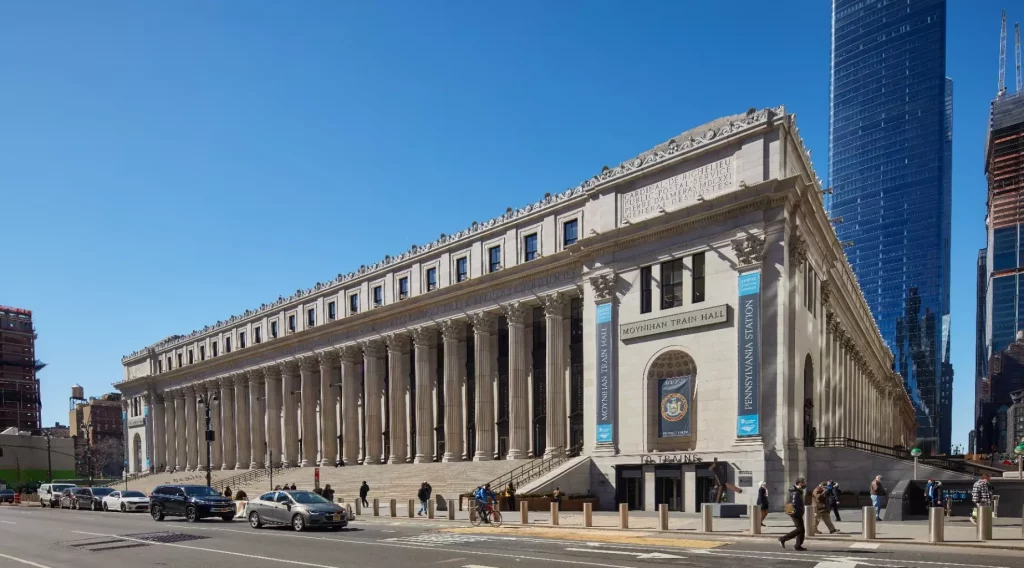Procore set out to find the companies, projects and individuals that stood out for their bold achievements in construction. Among the 27 outstanding finalists selected, nine were named winners of the 2022 Groundbreaker Awards. This article is the second in a nine-part series spotlighting each winner.
Skanska USA started in 1971 with one job, the 63rd Street Subway line in New York. It has since grown to be one of the most recognizable names in construction excellence. As a leading general contractor and project developer across the globe, Skanska is committed to protecting people and the planet and is a leader in construction safety, sustainability and inclusion.
Their values of acting ethically and transparently and being better together are evident across projects worldwide. On every job, Skanska’s groundbreaking innovation is supported by technology to better “commit to customers,” completing each job with the highest level of quality and care to exceed clients’ needs.
“One of our primary goals is to build what matters, and that is something that we feel strongly about in terms of the way that we work, the types of projects that we do — hospitals, roads, schools — it all contributes to bettering society,” says Brian Tighe, National Director of Project Analytics for Skanska USA Building.
A Sustainable Landmark Project
When Skanska was tapped to design/build the $1.6 billion renovation of what would become Moynihan Train Hall, the stakes for excellence were only increased. The extraordinary transformation of the train station in New York City has been and continues to be a major factor for improving travel.
“Helping people commute to one of the largest, busiest cities in the world, and making the lives of these commuters easier aligns with our goal to shape the way people live, work and connect,” says Tighe.
A mammoth project, the Moynihan Train Hall came on the heels of a decade-long job, Moynihan Station Phase 1, which Skanska completed in August 2016. Faced with such a complex task, Skanska leaned on technology and their talented team to deliver on time, safely and with exceptional quality.
While Moynihan Train Hall leaves a lasting positive impact on the community through its easing of travel congestion, it also is the first of its kind from a green perspective.
“When we say “care for life,” it’s safety — but it’s also sustainability,” Tighe notes. Myrrh Caplan, Vice President of Sustainability, took the lead to pursue and ultimately obtain the first ever LEED Transit BD+C certification in the world.
Building For The Future Community
Skanska’s business purpose is “to build what matters,” and the Moynihan Train Hall project was proof of that. The rehabilitation of the former Penn Station not only makes life easier for travelers and tourists today, but also reinvigorates New York’s transportation looking into the future. Honoring the golden age of train travel, Moynihan Train Hall ushers in a new era.
The team worked hard to keep transportation uninterrupted for the over 600,000 daily commuters who rely on the trains to get around — disrupting their travel on the 30 active rail tracks or the post office operations was not an option. None of the active railroads were delayed over the course of construction, and the project even opened two months early in January 2021.
“We worked together with all the stakeholders to ensure the people who were relying on that transportation to get to work every day were not impacted,” reports Tighe.
Boasting 92-ft high skylights designed in Bavaria, marble from Canada and Italy, and several permanent art installations, all 1.3 million square feet of Moynihan Train Hall provide not only practical use, but also enhance civic pride. The complex glass installment was made up of 2,200 individual pieces and required a temporary 30-ft platform to safely build the skylight. Hand-selected stone that was part of the original building was incorporated back into the new structure to honor the historic site.

Throughout the complexity of construction and renovation, safety was strongly upheld and jobsite incidents were 0.8 below the national average.
“It provides lasting value to such an iconic location,” says Tighe. “This was a long-term investment that will help people for decades to come.”
Rising Above Challenges With Technology
Constructing around and remodeling the previous bones of Penn Station in the midst of a pandemic was no easy task, but the Skanska team was undeterred.
“The team continued to get curve balls thrown at them like supply chain issues and safety challenges — and persevered through all the obstacles,” Tighe praises. “They were all change makers, contributing to the success of the job.”
Technology played an active role in completing the project despite less-than-ideal conditions. Communication was of the utmost importance, and the team turned to Procore to stay on the same page. They used the Meetings Tool to record minutes and manage accountability across remote teams.
“Connecting people during the pandemic was critical. The Correspondence Tool was important to our operations teams — we had owners, consultants and subcontractors in and out of the Correspondence Tool to stay on top of our communication,” explains Tighe. “The tools in Procore that helped connect people were the most important because they enabled that collaboration to happen.”
From Crammed To Comfortable
The previous Penn Station wasn’t built to withstand the traffic of today’s travel, so Moynihan Train Hall is a welcome change in New York. Skanska had to adapt the existing facility to meet the safety requirements, aesthetic updates and decongestion necessary for a successful renovation. Now, commuters are thrilled to step into the updated building.
“The experience when folks come out of the train tracks is amazing — they’re not crammed,” says Tighe. “People walking around look up in amazement.”
Thanks to the team’s creative solutions, Skanska delivered a safe and iconic building that honors history while paving the way for the travel of tomorrow.
Leave a Reply